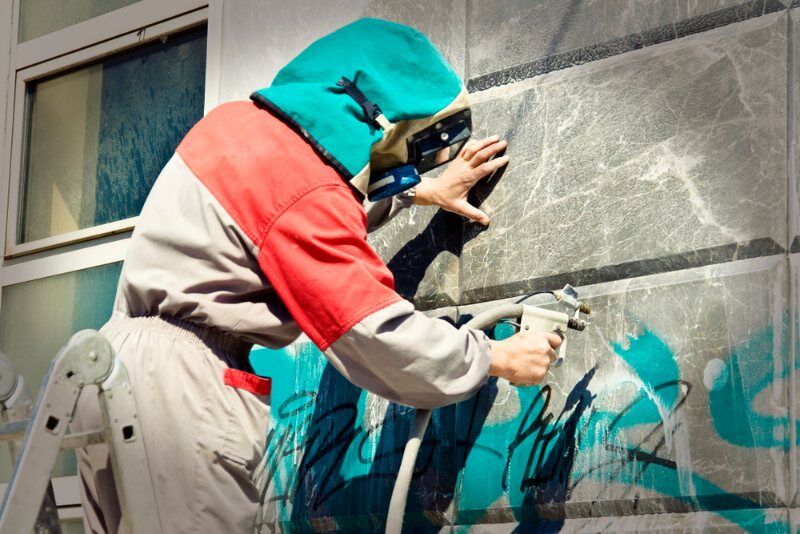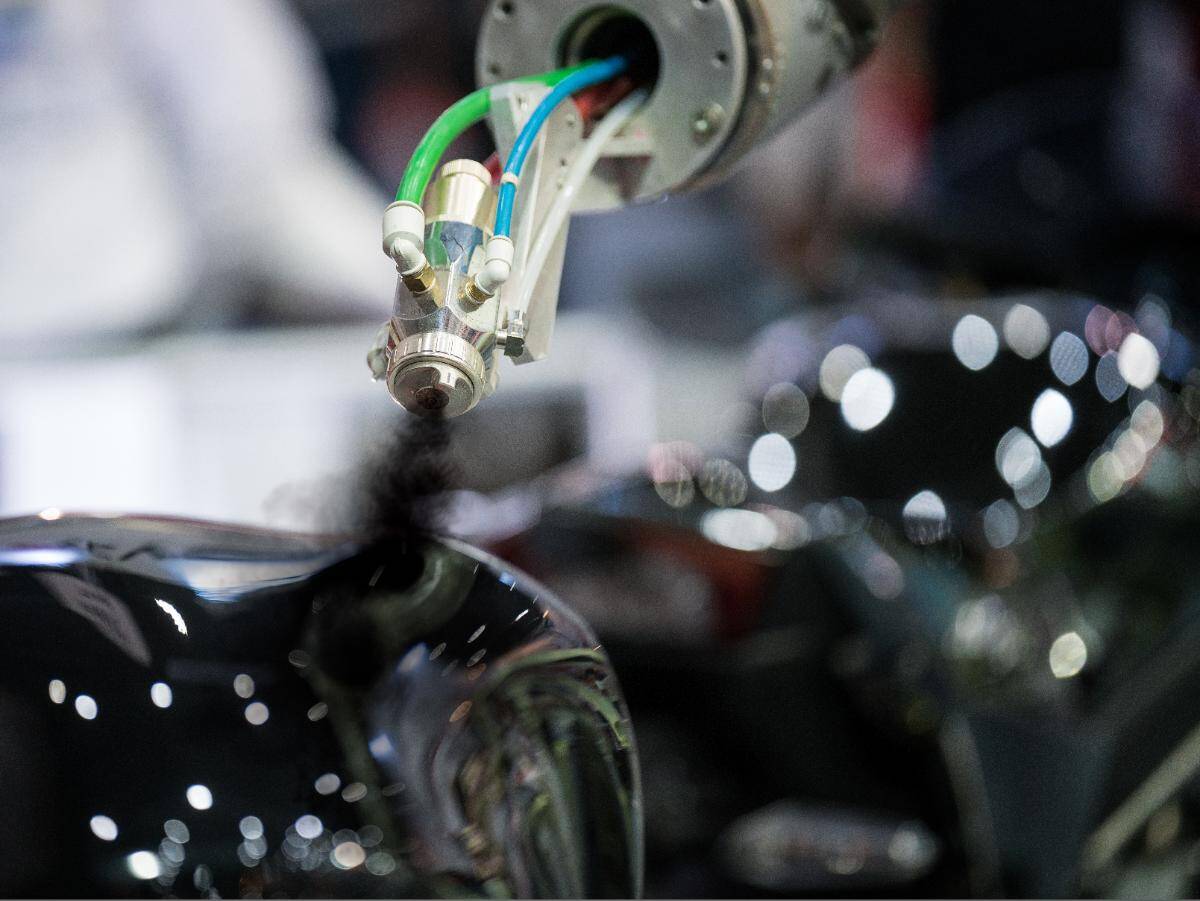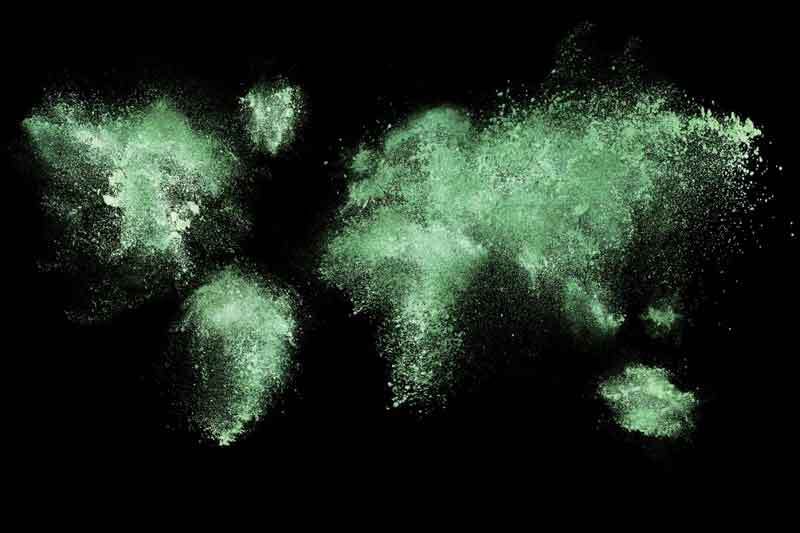Anti-graffiti coatings for protecting of public and private surfaces

Anti-Graffiti coating: What it is and how it works
Although the use of protective coatings on public and private building surfaces is a practice as old as human history, modern anti-graffiti coatings have been employed only in the last few decades, as the deliberate, undesired marking of surfaces has become more prevalent. Graffiti can be in the form of ink, pencils, markers, lipstick and, most common, paint. Most modern paints are based on oil- or water-based solvents (such as acrylic or latex paints), and therefore paints do not chemically bond with underlying surfaces. Instead, paint adheres to surfaces by virtue of solvents that evaporate and then harden as layers of pigment. The polymer binding agents dry and then stick together before adhering to surfaces through natural force. Anti-graffiti coatings essentially prevent paints from adhering to a surface by acting as an anti-adhesive shield between the paint and the surface.
Characteristics of quality protective coating
Protection, now and in the future
Simply put, commercial anti-graffiti coatings should efficiently protect surfaces. This means that coatings should minimise current effects on substrates, as well as minimise future damage and maintenance costs.
Transparency
While many coatings are slightly cloudy in appearance when wet, a proper coating is transparent once applied and dried. In this manner, a coating should be a protective film that is invisible to the naked eye. In all weather conditions, the natural colour of the applied surface should be unaffected, without causing unwanted surface gloss or other optical changes.
Versatility
While many coatings are slightly cloudy in appearance when wet, a proper coating is transparent once applied and dried. In this manner, a coating should be a protective film that is invisible to the naked eye. In all weather conditions, the natural colour of the applied surface should be unaffected, without causing unwanted surface gloss or other optical changes.
Ease of use
Anti-graffiti coatings are ideally fast-drying, easy to apply (and reapply) and easy to remove.
Environmentally friendly
The goal of anti-graffiti protection is to reduce environmental damage, not to increase it. Anti-graffiti coating is a reversible protection system against not only human-inflicted damage, but also against airborne contaminants such as carbon dioxide or smoke residue. The coating itself should be as chemically neutral and low-impact as possible.
Vapour-permeable
Anti-graffiti coatings should be fully breathable and as thin as possible, with low water vapour-diffusion resistance, so that all possible surface moisture evaporates.
Coating types and how they protect against graffiti
Sacrificial coatings
Sacrificial coatings offer a clear barrier and are easily removed along with the graffiti, then reapplied as needed. These types of coatings are inexpensive, polymer-based and often transparent. Some recent advancements in anti-graffiti technology allows for surfaces to be protected with a single coat. While sacrificial coatings can be metal-based and used to limit corrosion, wax-based and water-based sacrificial coatings are used as a barrier against graffiti. Most water-based anti-graffiti coatings can be applied with a brush, roller or preferably an airless spray.
Semi-sacrificial coatings
Semi-sacrificial coatings protect without requiring immediate reapplication following each effort to remove graffiti. These coatings and the graffiti they shield against can be removed with simple pressure. That said, doing so can exacerbate surface erosion. Semi-sacrificial coatings should be reapplied every few graffiti attacks.
Permanent coatings
Permanent coatings are relatively expensive and more difficult to apply, but they are applied one time and, at least in theory, never again. Graffiti is removed with a simple hydrocarbon solvent. These coatings are typically manufactured using polyurethanes, fluorinated hydrocarbons, silicon, nanoparticles or other synthetics, though the coating itself is chemically inert.
Risks and potential drawbacks of different types of anti-graffiti coatings
Anti-graffiti treatments can be comprised of a number of materials, such as polyurethane or crystalline wax, but these coating solutions can affect colour, and some wax-based protective coatings remain opaque and discoloured even after drying. Depending on the components of the coating, non-water-based solutions can affect surface texture and even reduce a surface’s natural repellence of water. Some anti-graffiti coatings can lead to increased surface deterioration, artificial ageing and reduced effectiveness over time of the anti-graffiti treatment itself. Additionally, coating components can influence patina composition and reduce patina dissolution over time, leading to, for example, unintended corrosion of some metal surfaces. Additionally, some coatings that require multiple layers may be somewhat less cost-effective in initial application, while permanent coatings can damage the underlying surface over time. If the coating you choose requires more than one layer, you will have to apply a first coating before waiting several hours until a second coating can be applied.
What’s the best anti-graffiti coating for your coating needs?
Because anti-graffiti coatings can cause unintended damage to substrates, it is important to use coatings that adhere with minimal or no substrate damage, that ensure water repellence and UV resistance, and that are ecologically sound. In addition, while permanent coatings can be effective, it can be just as important that a coating itself be removable if necessary.
Avoid using coatings that are potentially harmful to the environment, such as ones that require additional chemical or abrasive materials to be applied during the removal process. Graffiti is pollution enough, and the goal is to reduce damage to infrastructure, as well as the natural environment. Recent innovations allow for coatings that are non-permanent and which allow for easy facilitation of graffiti removal. Some advanced water-based protective films are made of the same all-natural vegetable polysaccharides as used in simple foodstuffs, and they can be applied with only one coating layer. This coating can easily be removed with no more than hot water at 60-700C, without the need for chemicals. The result is longer-lasting effectiveness in protecting surfaces without compromising the durability of substrates. In addition, the coating is easy to apply, breathable and transparent, and a graffiti removal process that is harmless to humans, animals and the environment.
Do you have questions about what the best anti-graffiti coating is for your needs? Contact us for support and guidance to help choose the product best-suited for you and to connect with industry leaders in anti-graffiti coatings.
What solution are you looking for?
We are specialized in the anti graffiti coating. Need the best products or advice? Then please leave your details and we will get in touch.


